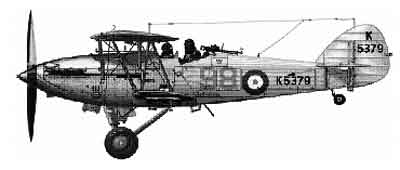Motto: "Never failing."
Badge: Cerberus.
This squadron claims to have barred the way (front and rear) during the German retreat in 1918
and so considered Cerberus, as the watchdog of Hades, a suitable badge. The motto commemorates a message
of congratulation received from the General Officer Commanding in 1918.
Authority: HM King George VI, October 1937.
No. 98 Squadron, RFC, was formed at Harlaxton, Lincolnshire, on 3Oth August 1917, from a nucleus
flight from No. 4 Training Squadron and in the following spring crossed to France as a day-bombing unit
equipped with DH9s. The squadron was attached successively to the 9th, 1Oth, 2nd, 9th
and 1st Brigades, RAF, and whilst with the 9th Brigade earned the commendation of Marshal Foch for its
work during the final Somme battles. The squadron claimed 40 enemy aircraft destroyed
and 35 others driven down out of control.
From 1st November the squadron was employed chiefly on reconnaissance work, and on 8th November one
of five aircraft actually landed between the British infantry and the enemy to obtain information
regarding the German dispositions.
In June 1919, No. 98 Squadron became a casualty of disarmament and ceased to exist.
However, during the expansion of the RAF in 1936 the number 98 was again to be found in the Order of
Battle. Equipped with Hinds the squadron was re-formed at Abingdon as a
day-bomber squadron on 17th February 1936. In August of that year it moved to Hucknall and there,
in 1938, re-armed with Battles.
For the first nine months or so of the Second World War No. 98 served as a reserve squadron and
during the period April/June 1940, was based in France. Its homecoming was a tragic one, for on
17th June 1940, the SS Lancastrian, which was carrying most of No. 98's personnel, was bombed and sunk
while crossing the English Channel. Seventy-five airmen of the squadron were officially reported lost
and fifteen others are believed to have perished. Survivors reached England in various vessels, in
some cases weeks after the disaster.
After re-forming at Gatwick in July 1940, the squadron, still equipped with Battles, saw almost a
year's-worth of service in Iceland with Coastal Command. It was disbanded in July 1941, but in September
1942, re-formed at West Raynham as a bomber squadron flying Mitchell aircraft. It moved to Foulsham in
mid-October and on 22nd January 1943, used its Mitchells against the enemy for the first time when an
attack was made on oil targets at Terneuzen (Ghent) in Belgium. In August 1943, by which time it was
part of the 2nd Tactical Air Force, No. 98 moved to Dunsfold, and subsequently took part in pre-invasion
attacks on Northern France and on the Noball sites in the Pas de Calais. After D-Day it operated in
close support of the advancing Allied armies, and from October 1944, onwards was based on the Continent.
When VE Day finally came it was stationed at Achmer in Germany.
After the end of the war No. 98 converted to Mosquitoes and remained with the occupation forces.
In February 1951, the Squadron received Vampire fighter-bombers, replacing these with Venoms in 1953.
In April 1955 the Squadron received Hunters and became a day fighter unit until disbanding on 15 July 1957.
On 1 August 1959, the Squadron was reformed again at Driffield as a Thor intermediate range ballistic
missile unit, disbanding again on 18 April 1963. The following day No. 245 Squadron at Tangmere was
renumbered No. 98 and in October moved its Canberras to Watton. In April 1969, it moved to Cottesmore
and was disbanded again on 27 February 1976.
 Hawker Hind of 'A' Flight of 98 Squadron.
Hawker Hind of 'A' Flight of 98 Squadron.
 A North American Mitchell II of 98 Squadron.
A North American Mitchell II of 98 Squadron.
|







